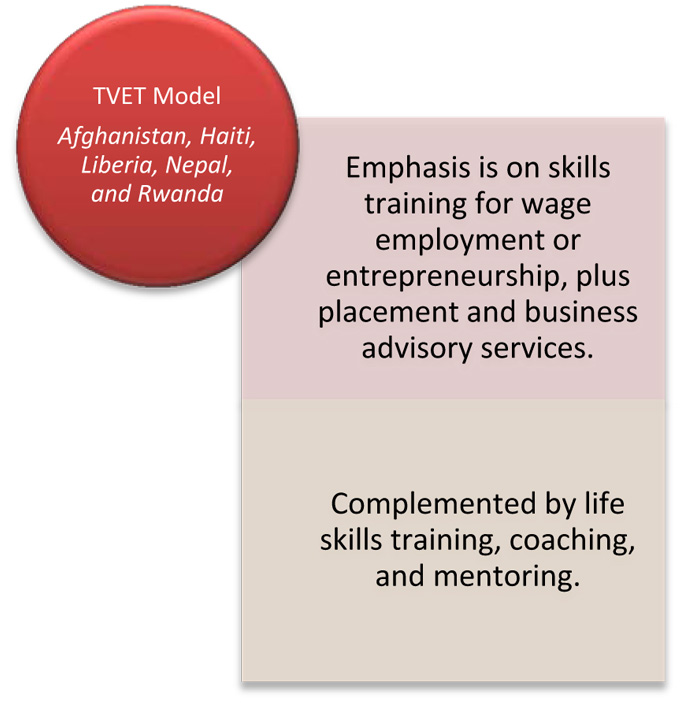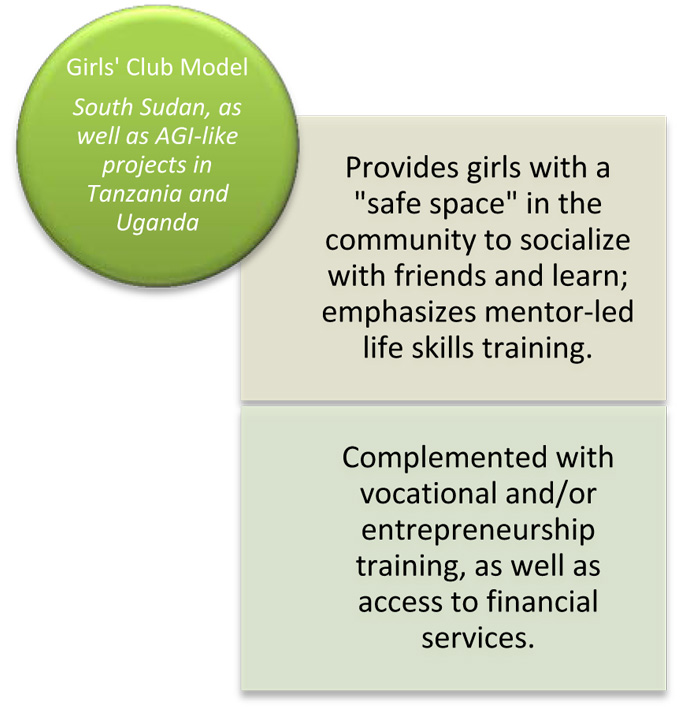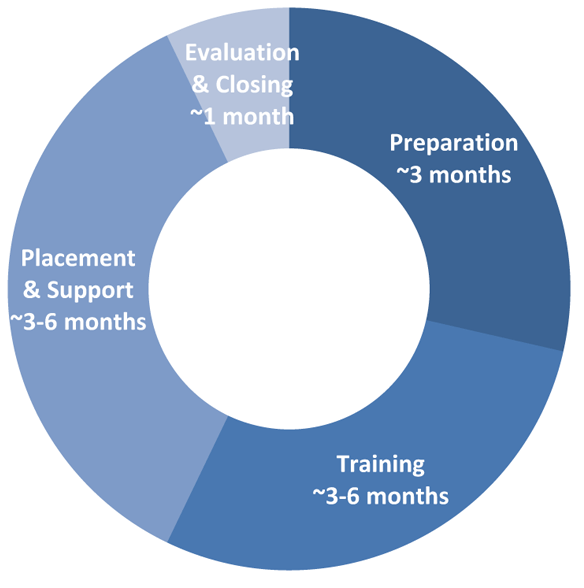Diagnosis and Targeting
Selecting a Program Model
Rigorous evidence suggests that the two models—TVET and the Girls' Club—work for young women and should be implemented and tested across a variety of settings. In Liberia, for example, the EPAG project (TVET model) increased participants' employment by 47 percent and earnings by 80 percent (Adoho et al. 2014). The Girl's Club model in Uganda raised the likelihood of girls being engaged in income-generating activities by 35 percent and had large and significant impacts on sexual behaviors and experience of violence (Bandiera et al. 2012).
In contexts where there are limited opportunities for wage employment, skills projects should help position youth for success in self-employment. Oftentimes there is an expectation that skills training projects should affect wage employment, but in many places, youth need skills to help them enter and be more productive in self-employment. Projects risk failure if they do not include self-employment outcomes in contexts where there is not sufficient demand in the labor market to sustain additional wage workers. In Liberia, for example, AGI chose to focus the majority of the training on entrepreneurial skills and has been gradually reducing the job skills training after rigorous impact evaluation results found it to be less effective.
Plan and budget generously for follow-up after the training—don’t wait until the training ends to figure out what follow-up services to provide. AGI experience suggests that follow-up placement and business advisory services are very important for labor outcomes. Projects should allocate equal or even more time in the project cycle for follow-up services as for the classroom training. AGI pilots typically provided 3 to 5 months of classroom training followed by 3 to 6 months of follow-up services. In Liberia, for example, the EPAG project continues to conduct reunions, refresher trainings, and limited alumni services to graduates even after the official follow-up period ends.
Youth employment projects should remove barriers to young women's participation and sources of exclusion. While AGI pilots were designed exclusively for young women, some AGI design features (for example, ensuring safe spaces, providing childcare, supporting young women into nontraditional trades, and so on) should be mainstreamed within coeducational youth employment projects to ensure young women's inclusion (see Promoting Young Women's Inclusion).
Once the target population is identified, the intervention design process begins. Start by scanning the evidence base for interventions that have successfully improved the outcomes that the program seeks to address and see if proven interventions can be replicated or adapted. If there are insufficient interventions, a new intervention may be necessary. The AGI pilots drew on the existing literature on comprehensive skills training projects (technical skills plus life skills) that had been proven effective for vulnerable youth in other contexts, particularly in Latin America and the Caribbean (Betcherman et al. 2007).
AGI program models were chosen based on the vulnerabilities of the target populations and identified labor market opportunities. However, the Jordan and Lao PDR pilots were unique in their designs; Jordan tested the effectiveness of job vouchers and employability skills training among community college graduates, and Lao PDR implemented a business competition and college career counseling offices. The remaining six AGIs can be broadly categorized among two models, as shown below:


TVET and Girls’ Club models vary in several important ways, including their relevancy across settings, the priority constraints they seek to address, the necessary supply of quality training services, and the average program cost.
| Context | Priority Constraints | Supply of Services | Resources and Tools | |
| TVET Model | Beneficiaries may be urban, peri-urban, or rural if there is a rural supply of services and/or rural residents do not face binding mobility constraints. | Most appropriate when the lack of basic skills and job-relevant skills are the primary constraints. Appropriate for youth of working age; for younger ages, it may be more appropriate to focus on work readiness skills, such as financial education and basic savings activities, rather than traditional TVET. | TVET models require an active supply of public or private skills training providers. | |
| Girls' Club Model | Can be implemented in urban as well as in rural agrarian settings. Can be particularly relevant in post-conflict settings where rebuilding social cohesion is a priority. | Most appropriate in cases where there are severe supply-side social constraints. Particularly relevant in conflict-affected settings with low social capital and where gender discrimination is pervasive. | The Girls' Club model can accommodate a weaker supply of skills training. Typically the emphasis is on life skills that are delivered through Training of Trainer (ToT) mechanisms. |
However, given that lack of skills is only one of many constraints that young women face in accessing the labor market across all AGI contexts, both models extend beyond training and include extensive follow-up and social support, as well as community outreach. In most cases, what came after the skills training was equally or more important than the training itself. AGI pilots provided three to six months of placement and support services beyond the training as shown in the graphic, below.
AGI Project Cycle

- Preparation: Project team staffing, community entry assessments, contracting of service providers, baseline assessment
- Training: Launch events, classroom training, implementation monitoring
- Job Placement and Business Advisory Services
- Project Evaluation: Completion of evaluation and administrative closing of the cycle
The AGI results chain, below, depicts the AGI theory of change, linking project activities, outputs, outcomes and the long-term goals:
| AGI Results Chain | ||||
| Component | Activities | Outputs | Outcomes | Long-Term Goals |
| Adolescent Centers/Clubs | Set up a safe space for girls to play games, read, and socialize | Increased club participation | Expanded social networks for girls | Socially empowered young women |
| Business Development Skills |
|
|
Increased employment and incomes | Economically empowered young women |
| Job and Technical skills |
|
|
Increased employment and incomes | Economically empowered young women |
| Life Skills | Deliver training on inter- and intra-personal skills, health and hygiene, violence prevention and response, civic engagement, and so on | Improved knowledge and awareness | Increased confidence and aspirations, healthy behaviors | Socially empowered young women |
| Financial Education and Services |
|
Increased savings (frequency and volume) and borrowing | Increased financial assets | Economically empowered young women |
| Community Engagement | Organize community events and parent / family forums | Improved knowledge and awareness and participation | Improved community and parental support for the project goals | Socially empowered young women |
